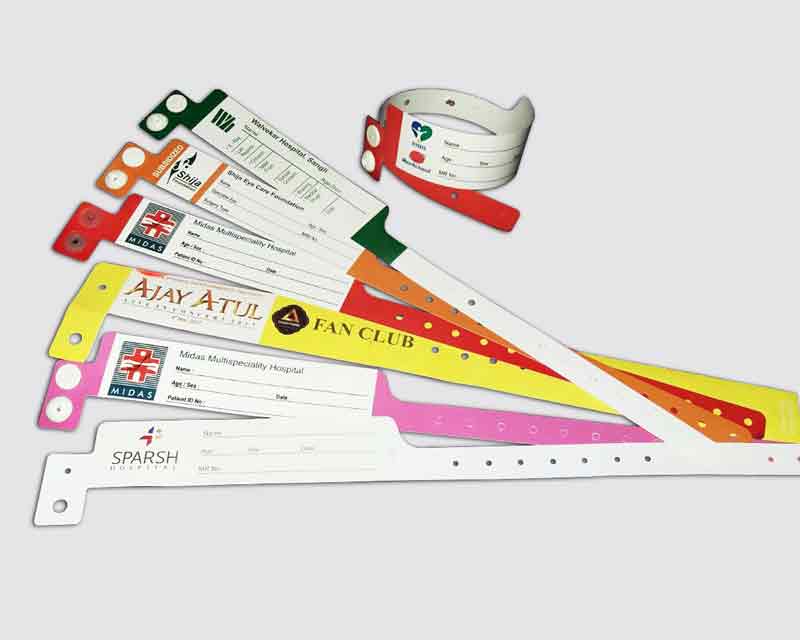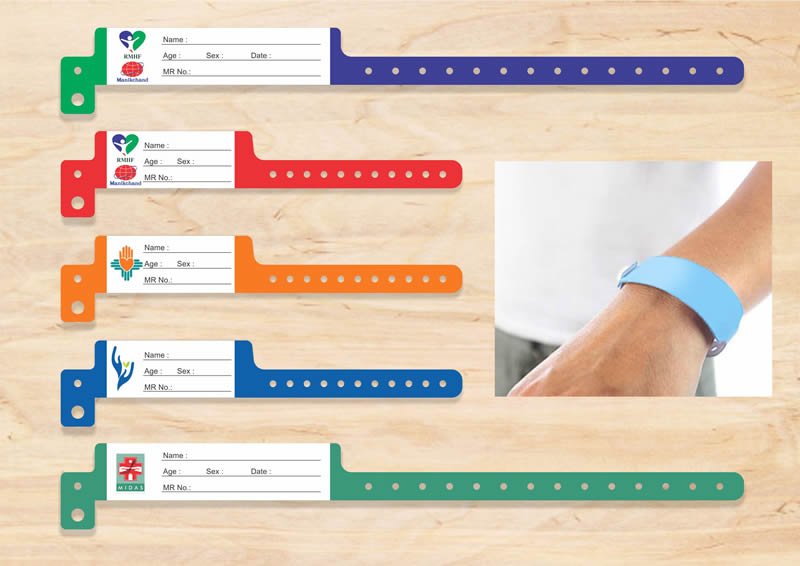Exploring the Various Kinds Of Patient Identification Band Made Use Of in Clinical Facilities
In the complex world of healthcare, the important role of Patient Identification bands frequently goes undetected. These bands, varying from easy paper wristbands to advanced RFID bands, create the backbone of Patient safety and security methods, ensuring precision in Patient Identification. The vast variety of these bands, each with its special benefits and constraints, is commonly forgotten. As we browse via this subject, one may acquire understanding right into the refined intricacies and vital value of such bands in medical facilities.
Recognizing the Value of Patient Identification Bands
While they might appear like plain devices, Patient Identification bands play an important function in clinical centers. These bands offer as an important device for confirming Patient identity, stopping clinical errors associated to misidentification. Patient Identification bands also aid in streamlining administrative jobs, ensuring exact record-keeping and payment.
Typical Paper Wristbands: Their Usage and Limitations
Conventional paper wristbands have been a staple in Patient Identification across various medical facilities. While their use prevails, they nurture specific constraints that might influence their effectiveness in Patient monitoring. This area will certainly focus on the scope of their application and the fundamental disadvantages associated with their use.
Paper Wristbands: Usage Extent
In the realm of Patient Identification, paper wristbands have long held an essential duty. These bands are usually made use of in outpatient setups, where the Patient's stay is short-term. In spite of improvements in modern technology, the modest paper wristband remains a dependable and economical remedy for Patient Identification in numerous medical care circumstances.
Limitations of Paper Wristbands
Regardless of their widespread usage, paper wristbands are not without their drawbacks. Their physical resilience is among the considerable constraints. Direct exposure to water, sweat, or misuse can provide them unreadable or also create them to degenerate. In enhancement, paper wristbands typically lack the technical capacities of more contemporary alternatives, such as barcoding or RFID chips, restricting their capability to simply displaying written info. The lack of ability to update or change the data on the wristband is another drawback. Additionally, if the details is handwritten, clarity can be endangered, resulting in prospective misidentification. Paper wristbands can trigger pain or skin irritation to some patients, specifically when put on for extensive periods.
Barcoded Wristbands: Developments in Patient Identification
While Patient Identification has long been a critical facet of healthcare, the development of barcoded wristbands signifies a substantial leap forward. These bands leverage the simpleness of barcoding modern technology, allowing for Patient details to be quickly scanned and accessed. They boost the rate and accuracy of Patient Identification, lowering the risk of medical mistakes associated with misidentification. Barcoded wristbands are economical, very easy to produce, and get rid of handwriting mistakes usual with manual systems. They are not without limitations. While they use improvements over typical bands, the barcode can become used or smudged, providing it unreadable. In spite of this, barcoded wristbands continue to be a vital device in contemporary medical care settings, representing the intersection of modern technology and Patient treatment.
Radio Regularity Identification (RFID) Bands: an Action Towards Futuristic Medical Care
The evolution of Patient Identification bands has caused the development of Radio Regularity Identification (RFID) Bands (patient identification band). These cutting-edge devices present crucial advantages for health care centers, offering an extra effective and technically progressed means of Patient Identification. The execution of RFID in health care is a substantial action towards check my site a more advanced technique to Patient administration and security
Comprehending RFID Bands

RFID Bands: Secret Benefits
Largely, these bands improve Patient security by providing accurate, immediate Identification, therefore decreasing medical mistakes. RFID bands can save a vast quantity of Patient information, including medical history and allergies, allowing individualized treatment. On the whole, RFID bands represent a significant development in Patient Identification innovation, benefiting both individuals and medical care providers.
Implementing RFID in Healthcare
As we step into a technically sophisticated period, the execution of RFID bands in healthcare becomes increasingly vital. These bands supply a smooth method to track and recognize patients, ensuring their safety and improving effectiveness in therapy procedures. RFID bands supply numerous advantages over traditional Identification methods. They can store a vast amount of data, including the Patient's case history and therapy strategies, which can be easily accessed by doctor. This information aids doctors make educated decisions relating to the Patient's treatment plan. RFID bands reduce clinical mistakes by offering exact Patient Identification, which is crucial in stopping misdiagnosis or incorrect medication management. Thus, the implementation of RFID bands is a significant action towards improving Patient safety and health care distribution.

Color-Coded Wristbands: Aiding in Quick and Accurate Diagnosis
In the bustling atmosphere of a clinical facility, color-coded wristbands have emerged as crucial devices for swift and exact Identification of a client's medical problem. These wristbands, worn by people, carry specific shades that correspond to various medical problems or statuses. This system is made to use instant visual cues to healthcare service providers, enhancing Patient safety and care quality.
Methods for Effective Execution and Administration of Patient ID Bands
Attaining optimum use of Patient Identification bands demands a well-structured method for their application and administration. Patient education and learning is also vital; people need to comprehend the visit site objective of the bands and the need for their continuous wear. It's vital to have a backup plan in location, such as barcode scanning or biometrics, to make certain that Patient Identification is never ever this post jeopardized.
Conclusion
Patient Identification bands are crucial in clinical centers to make certain safety and security and accuracy. Reliable execution and management of these bands can dramatically lower medical errors, increase effectiveness, and enhance general Patient treatment.
These bands, differing from straightforward paper wristbands to advanced RFID bands, form the backbone of Patient safety protocols, making sure accuracy in Patient Identification.The advancement of Patient Identification bands has brought regarding the development of Radio Regularity Identification (RFID) Bands. Overall, RFID bands represent a considerable improvement in Patient Identification modern technology, benefiting both individuals and medical care companies.
RFID bands decrease clinical mistakes by supplying precise Patient Identification, which is crucial in stopping misdiagnosis or incorrect medicine management. Patient education and learning is additionally critical; people must recognize the objective of the bands and the demand for their consistent wear.